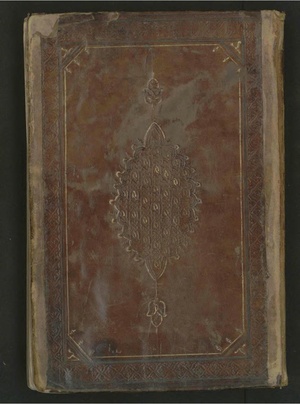فرانتس إگناتس پرونر
فرانتس إگناتس پرونر Franz Ignaz Pruner (عاش 8 مارس 1808 - 29 سبتمبر 1882)؛ ويُعرف أيضاً بإسم برونر بك Pruner Bey أثناء إقامته في مصر، كان طبيب عيون ألماني، وأنثروپولوجي من فرايمد، اوبرفالتس.
. . . . . . . . . . . . . . . . . . . . . . . . . . . . . . . . . . . . . . . . . . . . . . . . . . . . . . . . . . . . . . . . . . . . . . . . . . . . . . . . . . . . . . . . . . . . . . . . . . . . . . . . . . . . . . . . . . . . . . . . . . . . . . . . . . . . . . . . . . . . . . . . . . . . . . . . . . . . . . . . . . . . . . . .
تعليمه
درس الطب في ميونخ، وفي 1831 شارك في بعثة علمية إلى مصر.
مزاولته الطب
بينما كان في مصر عينه والي مصر محمد علي باشا (1769-1849) as chair of anatomy and physiology at the medical school in Abuzabel, near Cairo. This institution had recently been established in 1825 by French physician كلوت بك (1793-1868). In 1832 he returned to Europe and studied with Francesco Flarer (1791–1859) in Pavia. Soon afterwards he returned to Cairo as director of a military hospital. Subsequently, he served as a professor of ophthalmology as well as director of the hospital at مستشفى القصر العيني. In 1839 he became a physician to Egyptian royalty, and was given the title of bey. In 1860 he returned to Europe, eventually settling in Paris, where he performed anthropological research. وبعد اندلاع الحرب الپروسية الفرنسية، انتقل إلى پيزا، حيث عمل باحثاً خاصاً حتى وفاته في 1882.
جهوده الطبية
While in Egypt, Pruner dealt with the treatment of epidemics such as bubonic plague, cholera and typhoid fever. He also worked with الأمراض المدارية، and was concerned with ophthalmic disorders that included trachoma and conjunctivitis. In 1847 he provided the first comprehensive description of pentastomiasis in humans.
جهوده الأنثروپولوجية
He is remembered today for his research in anthropology, linguistics, ethnology and ethnography. He published over 120 works in these fields, and in 1865 was appointed president of the Société d’Anthropologie in Paris.
رأيه في العرق الزنجي
درس پرونر التركيبة العرقية للزنوج في مصر. In a book which he wrote in 1846 he claimed that Negro blood had a negative influence on the Egyptian moral character. He published a monograph on Negros in 1861. He claimed that the main feature of the Negros skeleton is prognathism, which he claimed was Negros relation to the ape. He also claimed that Negros had very similar brains to apes and that Negros have a shortened big toe which is a character which connects the Negros close to apes.[1]
كتابات مختارة
- Tentamen de morborum transitionibus, Munich 1830 (dissertation)
- Ist denn die Pest wirklich ein ansteckendes Übel, München 1839
- Die Überbleibsel der altägyptischen Menschenrassen, München 1841 - Remnants of the ancient Egyptian races.
- Die Krankheiten des Orients vom Standpunkte der vergleichenden Nosologie betrachtet, Erlangen 1847 - Diseases of the Orient, from the standpoint of comparative nosology.
- Topographie médicale du Caire avec le plan de la ville et des environs, München 1847 - Topography of Cairo with plans for the city and its environs.
- Die Weltseuche Cholera und die Polizei der Natur, Erlangen 1851 - The world cholera epidemic and the policy of nature.
- Der Mensch im Raume und in der Zeit, München 1859 - Man in space and time.
الهامش
- هذه المقالة مبنية على ترجمة المقالة المناظرة في ويكيبيديا الألمانية.
- ^ Gustav Jahoda, Images of savages: ancients [sic] roots of modern prejudice in Western culture, 1999, p. 82
خطأ لوا في package.lua على السطر 80: module 'Module:Authority control/auxiliary' not found.

